 The wind turbines of the Biioxo Wind Farm are located on land that used to be cultivated. (Photo: Santiago Navarro F.)
The wind turbines of the Biioxo Wind Farm are located on land that used to be cultivated. (Photo: Santiago Navarro F.)
The Tehuantepec Isthmus, a southern region of Mexico that includes the states of Oaxaca, Chiapas, Tabasco and Veracruz, holds the highest concentration of wind farms in Latin America. The Isthmus, measuring a mere 200 kilometers between the Pacific Ocean and the Atlantic Ocean, is the third narrowest strip of land on the continent, following Nicaragua and the Panama Canal. A total of 28 wind farms have been planned for construction, 15 of which have already been completed.
The region is ideal for the construction of wind farms since high wind speeds are constant throughout the year. “The southern Andes converge at the Tehuantepec Isthmus, creating a kind of tunnel effect the same width as the land strip. This ensures that the winds gain great strength and reach a high velocity,” explains Patricia Mora, a research professor in coastal ecology and fisheries science at the Interdisciplinary Research Center for Comprehensive Regional Development, Oaxaca Unit (CIIDIR Oaxaca), at the National Institute of Technology.
An environmental impact study conducted by the URS Corporation Mexico at the request of Natural Gas Fenosa, which was used to justify the construction of the Biino Hioxo park in Juchitan de Zaragoza, Oaxaca, concluded that the development of a wind farm “in this area of the state of Oaxaca is a clear example of sustainable development” and that “the project is environmentally viable as it utilizes renewable resources and does not generate significant environmental impacts.”
But while environmental impact reports tend to support the construction of these wind farm parks, local communities and environmentalists are raising concerns that local flora and fauna are being affected. The cases of the Barra Santa Theresa in Alvaro Obregon and San Vicente Beach in Juchitán de Zaragoza are of particular interest. “This is the meeting point of various intimately related aquatic and terrestrial ecosystems, known as ‘ecotones.’ What occurs in each distinct ecosystem affects the dynamic on a larger scale, placing the existence of the adjoining ecosystems in danger,” Mora said.
 Cattle and other livestock are raised close to the wind turbines of the Biioxo Wind Farm. (Photo: Santiago Navarro F.)
Cattle and other livestock are raised close to the wind turbines of the Biioxo Wind Farm. (Photo: Santiago Navarro F.)
In a detailed interview, the biologist explained what the environmental impact reports omit: the real impacts on the flora and fauna of the Tehuantepec Isthmus. These negative impacts extend not only throughout Mexico, but also into the ecosystems of Central America.
Mora even casts doubts about the way in which these environmental studies are conducted. “Generally there are ‘agreements’ behind closed doors between the consultants or research centers and the government offices before the studies are conducted. They fill out forms with copied information (and sometimes badly copied), lies or half truths in order to divert attention from the real project while at the same time complying with requirements on paper.”
In the following interview, Mora discusses the realities of the wind farms’ impacts – and how environmental impact studies are often manipulated to serve the interests of corporations.
Truthout: What could be the large-scale impacts on the flora and fauna in the TehuantepecIsthmus ecological corridor, principally in the Barra Santa Theresa, San Vicente Beach and La Ventosa?
The impacts will be seen on two time scales. First, the direct impact. When a project is installed, the first step is to “dismantle” the area, a process through which all surrounding vegetation is eliminated. This means the destruction of plants and sessilities – organisms that do not have stems or supporting mechanisms – and the slow displacement over time of reptiles, mammals, birds, amphibians, insects, arachnids, fungi, etc.
Generally we perceive the macro scale only, that is to say, the large animals, without considering the small and even microscopic organisms. But the most harm occurs in the micro scale. Often these organisms are not even identified, yet curiously, they are the organisms that in reality keep the ecosystems alive and balanced. In many of Mexico’s ecosystems, we are only recently cataloguing the full diversity of species. This process depends on the availability of researchers, funding and the accessibility of the zone. This is why there are still many endemic and native species that are recognized as endangered on national and even international lists.
After the construction is finalized, the indirect impact continues in the sense that ecosystems are altered and fragmented. As a result, there is a larger probability of their disappearance, due to changes in the climate and the use of soil.
What is the importance of the ecosystems in this region?
They are considered extremely fragile. As a result of their location in semiarid zones where the water cycle is vital, these ecosystems act as retainers of humidity and their disappearance drastically changes the humidity of the soil. When vegetation disappears, these ecosystems are converted into completely uninhabited deserts and solar radiation changes the dynamic of the soil, prohibiting the growth of new vegetation.
The relationship between humans and the environment is changing – we no longer have respect for the land and this contributes to a greater deterioration. Almost nobody considers this effect. The land is no longer perceived as our provider. It has been converted into a commodity.
In particular, I would like to point out the case of the Barra Santa Teresa and San Vicente Beach, as here we find ourselves at the meeting point of various intimately related aquatic and terrestrial ecosystems, known as “ecotones.” What occurs in each distinct ecosystem affects the dynamic on a larger scale, placing the existence of the adjoining ecosystems in danger.
Mexico’s coastal zones are extremely abundant and rich in diversity. Not only are there terrestrial organisms, but also aquatic organisms. In these zones we speak of thousands of species, many of which are not evident at first glance.
A dramatic example is the millions of viruses found in the world’s oceans. Generally, we think of viruses as bad things and we associate them with sickness, but this is a great falsehood. Viruses, like bacteria, are responsible for life on earth and for the richness and diversity of that life. In short, we need them to maintain life on this planet.
In coastal zones we find mangrove ecosystems, coastal dunes, and supra and infra littoral zones. We can make the claim that coastal vegetation plays a vital role in the humidity of these coastal zones. When this vegetation disappears, these ecosystems become deserts – inert and without life. Erosion creates havoc on the coastal border, encouraging the extinction of coastal lagoons and increasing the salinity of the soil, rendering it useless for agriculture.
Climate change will also lead to the disappearance of vegetation, removing natural barriers against air currents, tropical storms and cyclones. The life cycles of many species will be truncated. For example, reptiles require certain temperatures in order to create equal numbers of male and female offspring and to incubate that offspring. Since they cannot regulate their own body temperature, they depend on the temperature of their surrounding environment.
Mangroves act as refuges for aquatic species. In fact, the Laguna Superior is one of the most important sanctuaries in Mexico for terrestrial species. It forms part of the Mesoamerican corridor, through which thousands of birds from hundreds of different species pass. The lagoons are wetland refuges, providing resting places and food for these birds. If the mangroves disappear, the birds will lose this important resting place, which could contribute to their extinction. Bats would also be affected by changes in light and sound.
Wind turbines create a magnetic field. Could the magnetic fields produced by wind turbines have consequences for microorganisms found in the soil or for humans?
There is abundant information about the harm caused by the sound waves produced by wind turbines. These sound waves are not perceptible to the human ear, which makes them all the more dangerous. They are also low frequency sound waves and act upon the pineal and nervous systems, causing anxiety, depression (there is a study from the United States that found an elevated suicide rate in regions with wind farms), migraines, dizziness and vomiting, among other symptoms. Western science has given very little weight to electromagnetic and sound waves. In contrast, Eastern science, which gives greater importance to the flow of energy through the body, links the origin of many illnesses to the pollution we generate through the emission of human-made energy flows. The harm caused by this pollution has only recently begun to be accepted.
 During times of harvest and planting, the farmers live in cabins close to the Biioxo Wind Farm. (Photo: Santiago Navarro F.)
During times of harvest and planting, the farmers live in cabins close to the Biioxo Wind Farm. (Photo: Santiago Navarro F.)
There are also consequences for other living beings. Many animals, such as bats, orient themselves through the use of sound frequencies. Among marine animals, fish are another example – they guide themselves using the electromagnetic frequencies that pass through their bodies. Other animals also use similar mechanisms and it is difficult to gauge the full effect that the disruption of these frequencies might have.
I had the opportunity to personally observe an example of this problem at an aquarium in Mazatlán, Mexico. The aquarium’s sharks were swimming erratically, crashing into the glass, and refusing to eat. It turned out that the aquarium had recently repaired the shark tank using different iron screws than the previous screws. When the aquarium removed these new screws, the sharks’ behavior returned to normal. The material of the new screws had created a different magnetic field. A few simple screws.
Some animal species are positively phototropic, meaning that they are attracted by light. For example, one can commonly observe insects near streetlights at night or near computer screens in dark rooms. Some fishing techniques even take advantage of this trait, which is found in shrimp and other species. The migration patterns of some species are related to the moon cycle. The coastal wind farm projects that illuminate the night interfere with the cycles, causing an unusual number of animal and insect deaths, which can be observed on nearby beaches.
One would assume that these companies should conduct environmental impact studies related to their projects. Do companies conduct such studies? What are the parameters of these studies? What do they contemplate? Who does follow-up?
What happens is absolute corruption. I have to admit that generally there are “agreements” behind closed doors between the consultants or research centers and the government offices before the studies are conducted. They fill out forms with copied information (and sometimes badly copied), lies or half truths in order to divert attention from the real project while at the same time complying with requirements on paper. Unfortunately, consultants sometimes take advantage of high unemployment and hire inexperienced people or unemployed career professionals without proper titles. Sometimes the consultants even coerce them into modifying the data.
Research centers, pressured by a lack of funding, accept these studies. It is well known that scientists recognized by CONACYT (National Counsel on Science and Technology) accept gifts from these companies, given that they need money to buy equipment for their laboratories and to fill their pocketbooks to maintain their lifestyles. This is the extent of the corruption. Upon reviewing these studies, it is clear that the findings are trash, sometimes even directly copied from other sources online. These studies tend to focus on the “benefits of the project” and do not include rigorous analysis.
The Secretary of Environment and Natural Resources (SEMARNAT) does follow-up to the studies, but everything can be negotiated. The bureaucrats have the last word.
What would be the effects on the ecosystem, including the local communities, if a native animal species were to migrate to another space or disappear as a result of the wind farm project?
The majority of species have specific habitational niches. There are very few pioneering species that are capable of inhabiting new environments. The acclimation of each species depends on its life cycle and its adaptability. To give a concrete example, marine turtles always return to the same beach where they were born. If that beach were to disappear, they would have nowhere to return. Mangroves could be similarly affected since they are located in intertidal zones. Changes to the surf’s intensity, the depth of the water or the water’s salinity could cause them to disappear.
Many of these communities depend on fishing and agriculture, not only in economic terms but also culturally. What effects could these mega projects, with such a large number of wind turbines, have on communities?
The inhabitants would have to leave behind their traditional activities. Migration and misery would be their future. You can see how this has happened in other areas of the country. They would lose their culture and a lifestyle that has a deep respect for nature. For example, in the northwest coastal region of the country, the arrival of these projects has displaced the fishing communities and farmers. Today, many of these people and their children have migrated. In the worst cases, they have joined the drug trafficking business.
What is known about the first of these projects – Pilot Project La Ventosa – in terms of environmental impact? What have been the benefits and consequences of the project?
Very little is known about that project. Actually, environmental impact studies about it used to go unnoticed or were not conducted.
It is also unclear what the benefits have been – the statistics are not clear. To the contrary, the fact that communities have begun to organize against these projects reflects the discontent and the negligible benefit.
 (Photo: Santiago Navarro F.)
(Photo: Santiago Navarro F.)
The only benefit has been for the companies. The carbon credits they have received have allowed them to avoid taxes and have permitted them to continue polluting. Companies have seen spectacular earnings through the use of these carbon credits in stock exchanges. In summary, the only benefits have been for the transnational companies. There has been a high cost to the environment, which continues to be damaged by climate change. In fact, this damage is worse than what had been previously estimated, as the most recent findings by the United Nations show.
Copyright, Truthout.org. Reprinted with permission
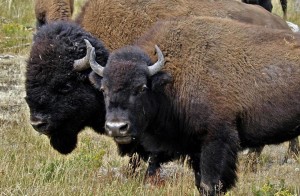

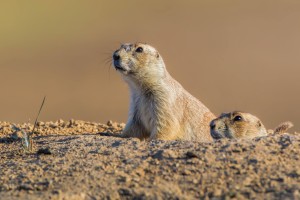



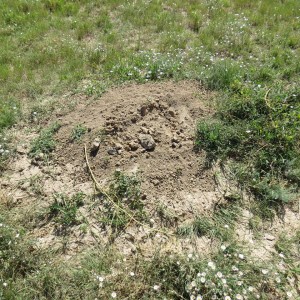

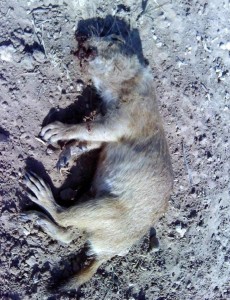






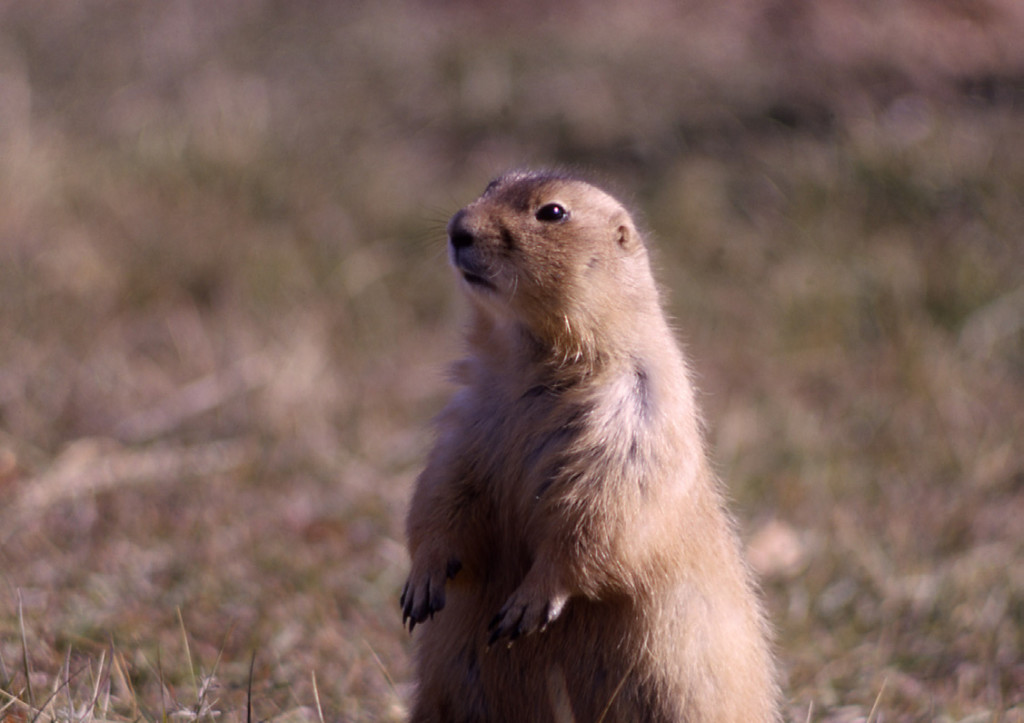

 Deep Green Resistance recently posted a new set of FAQs on the main website, addressing the myths of
Deep Green Resistance recently posted a new set of FAQs on the main website, addressing the myths of  The wind turbines of the Biioxo Wind Farm are located on land that used to be cultivated. (Photo: Santiago Navarro F.)
The wind turbines of the Biioxo Wind Farm are located on land that used to be cultivated. (Photo: Santiago Navarro F.) Cattle and other livestock are raised close to the wind turbines of the Biioxo Wind Farm. (Photo: Santiago Navarro F.)
Cattle and other livestock are raised close to the wind turbines of the Biioxo Wind Farm. (Photo: Santiago Navarro F.) During times of harvest and planting, the farmers live in cabins close to the Biioxo Wind Farm. (Photo: Santiago Navarro F.)
During times of harvest and planting, the farmers live in cabins close to the Biioxo Wind Farm. (Photo: Santiago Navarro F.) (Photo: Santiago Navarro F.)
(Photo: Santiago Navarro F.)

